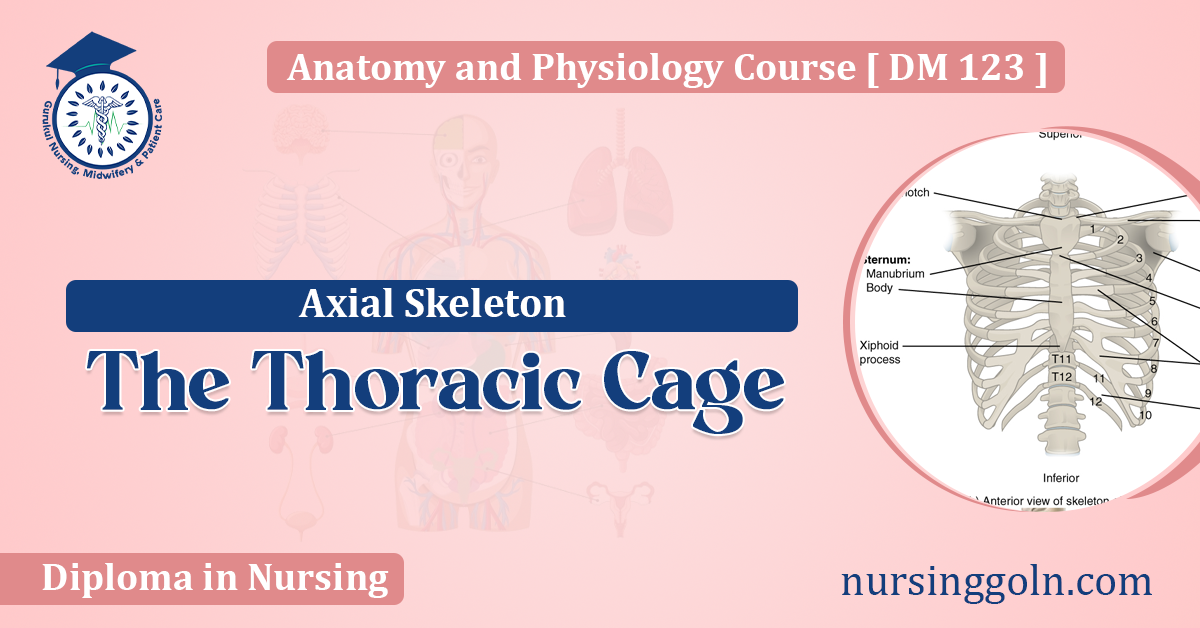The human body, a marvel of biological engineering, is protected and supported by an intricate system of bones. Nestled within the axial skeleton, the thoracic cage, also known as the rib cage, plays a crucial role in shielding vital organs, facilitating respiration, and supporting the structure of the upper body. This article delves into the details of the thoracic cage: its anatomy, function, and relevance in clinical contexts.
The Thoracic Cage
1. Overview of the Axial Skeleton
Before delving into the specifics of the thoracic cage, it’s essential to understand its placement within the broader framework of the axial skeleton. The axial skeleton consists of the skull, vertebral column, and thoracic cage. Together, these bones form the central core of the body, providing support, protection, and enabling essential physiological functions.
2. Anatomy of the Thoracic Cage
The thoracic cage is composed of three major components:
- Ribs: There are twelve pairs of ribs, each articulating posteriorly with the thoracic vertebrae.
- True Ribs (1-7): These ribs connect directly to the sternum through individual costal cartilages.
- False Ribs (8-10): They connect to the sternum indirectly via the costal cartilage of the rib above.
- Floating Ribs (11-12): These do not connect to the sternum at all.
- Sternum: A flat, elongated bone located in the center of the chest. It’s made up of three parts:
- Manubrium: The broad, upper segment of the sternum.
- Body (gladiolus): The main, longest portion of the sternum.
- Xiphoid process: A small, cartilaginous structure at the lower end of the sternum that becomes ossified with age.
- Thoracic Vertebrae: Twelve vertebrae that form the upper segment of the vertebral column, each of which articulates with a pair of ribs.
3. Functions of the Thoracic Cage
The rib cage serves a multitude of essential functions, including:
- Protection: The primary role of the thoracic cage is to safeguard vital organs, including the heart, lungs, and great vessels.
- Structural Support: The rib cage offers structural support to the upper body, including the shoulder girdle and arms.
- Facilitation of Respiration: The ribs, along with the intercostal muscles, assist in expanding and contracting the thorax during breathing.
- Hematopoiesis: The bone marrow within the ribs plays a role in producing red blood cells.
4. Clinical Significance of the Thoracic Cage
The rib cage, being at the forefront of the body, can often be subject to injuries and medical conditions. A few clinical scenarios include:
- Rib Fractures: A common injury, particularly in older individuals due to falls or direct blows. Complications can include pneumothorax or damage to underlying organs.
- Costochondritis: Inflammation of the cartilage that joins the ribs to the breastbone, causing chest pain.
- Pectus Excavatum and Pectus Carinatum: Congenital deformities of the chest wall. The former involves a sunken sternum, while the latter is characterized by a protruding breastbone.
- Thoracostomy: A medical procedure where a tube is inserted into the thoracic cavity to drain air or fluids.
5. Evolutionary Perspective
From an evolutionary perspective, the thoracic cage has undergone modifications in different species. For instance, birds have a specialized keel on their sternum to provide an anchor for their powerful flight muscles. In contrast, in snakes, the ribs play a more significant role in locomotion than in mammals.
6. Thoracic Cage in Cultural Context
Throughout history, the rib cage has also been imbued with cultural and symbolic significance. For example, in Christian theology, Eve is described as being created from one of Adam’s ribs, symbolizing companionship and unity. In various cultures, rib tattoos, jewelry, or even clothing patterns have been inspired by the aesthetic and symbolic aspects of the thoracic cage.
7. Conclusion
The thoracic cage, a central component of the axial skeleton, plays an indispensable role in ensuring our body’s safety, structure, and function. Its intricate design not only protects our most vital organs but also facilitates crucial physiological processes like respiration. Understanding its anatomy and function provides insights into clinical scenarios, evolutionary adaptations, and even its broader cultural significance.
Whether we recognize it or not, each breath we take is a testament to the efficiency and design of our thoracic cage. In both its form and function, it stands as a testament to the intricate design and evolutionary prowess of the human body.
